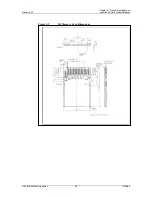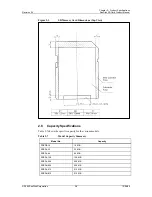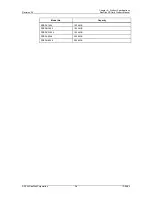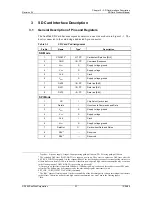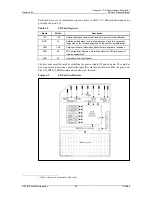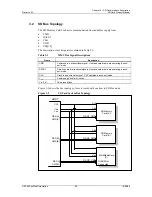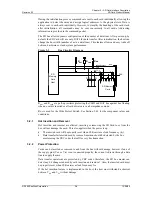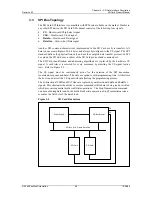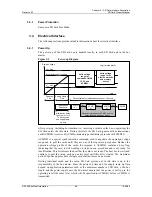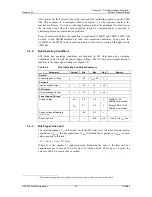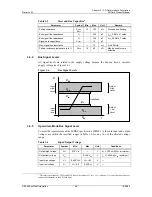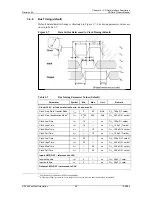
Chapter 3 – SD Card Interface Description
Revision 2.2
SD Card Product Manual
© 2004 SanDisk Corporation
3-12
12/08/04
3.5.2 Card
Identification
Register
The
Card Identification Register (CID)
12
is 16 bytes long and contains a unique card
identification number as shown in Table 3-10. It is programmed during card manufacturing
and cannot be changed by SD Card hosts.
Table 3-10
CID Register Definitions
Name Type
Width
CID-Slice
CID
Value
Comments
Manufacturer ID (MID)
Binary
8
[127:120]
0x03
Manufacturer IDs are
controlled and
assigned by the SD
Card Association
OEM/Application ID (OID)
ASCII
16
[119:104]
SD ASCII Code
0x53, 0x44
Identifies the card
OEM and/or the card
contents. The OID is
assigned by the
3C.
13
Product Name (PNM)
ASCII
40
[103:64]
SD02G
SD01G
SD512
SD256
SD128
SD64
SD32
SD16
Five ASCII
characters long
Product Revision
14
BCD
8 [63:56]
Product
Revision xx
Two binary-coded
decimal digits
Serial Number (PSN)
Binary 32
[55:24] Product
Serial
Number
32-bit unsigned
integer
Reserved ---
4
[23:20]
---
---
Manufacture Date Code
(MDT)
BCD 12
[19:8] Manufacture
date (for ex.
April 2001=
0x014)
Manufacturing
date—yym (offset
from 2000)
CRC7 checksum (CRC)
Binary
7 [7:1]
CRC7* Calculated
Not used, always “1”
---
1
[0.0]
---
---
*The CRC checksum is computed by using the following formula:
CRC Calculation: G(x)=x
7+3+1
M(x)=(MID-MSB)*x
119
+…+(CIN-LSB)*x
0
CRC[6…0]=Remainder[(M(x)*x
7
)/G(x)]
12
The CID Register in the SD Card has a different structure than in the MultiMediaCard.
13
3C represents the three SDA founding companies: Toshiba, SanDisk, and MEI.
14
The product revision is composed of two binary-coded decimal (BCD) digits (4 bits ea.) representing and “n.m”
revision number. The “n” is the most significant nibble and the “m” is the least significant nibble. Example: the
PRV binary value filed for product revision (6.2) would be “01100010”.

